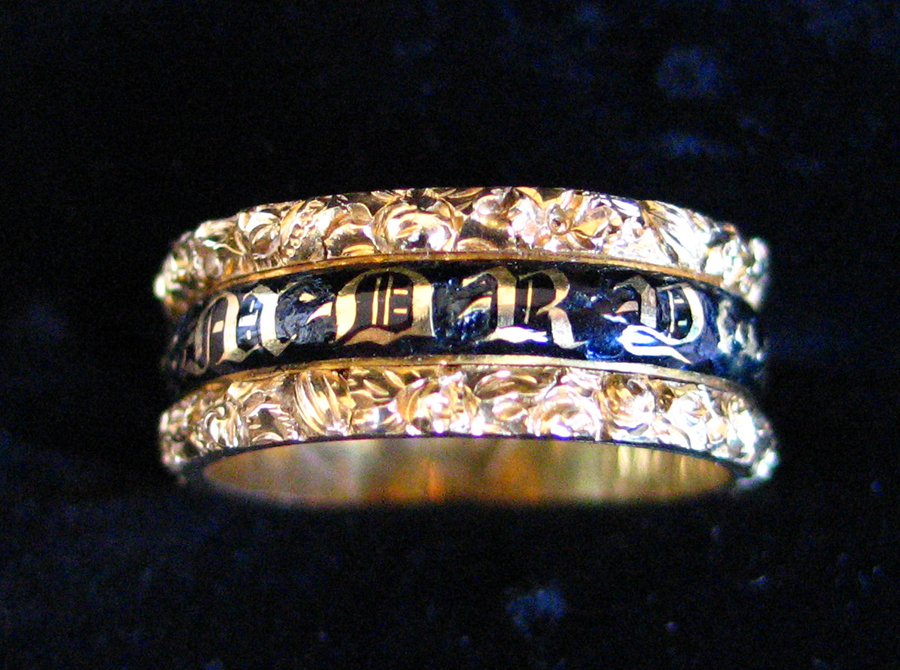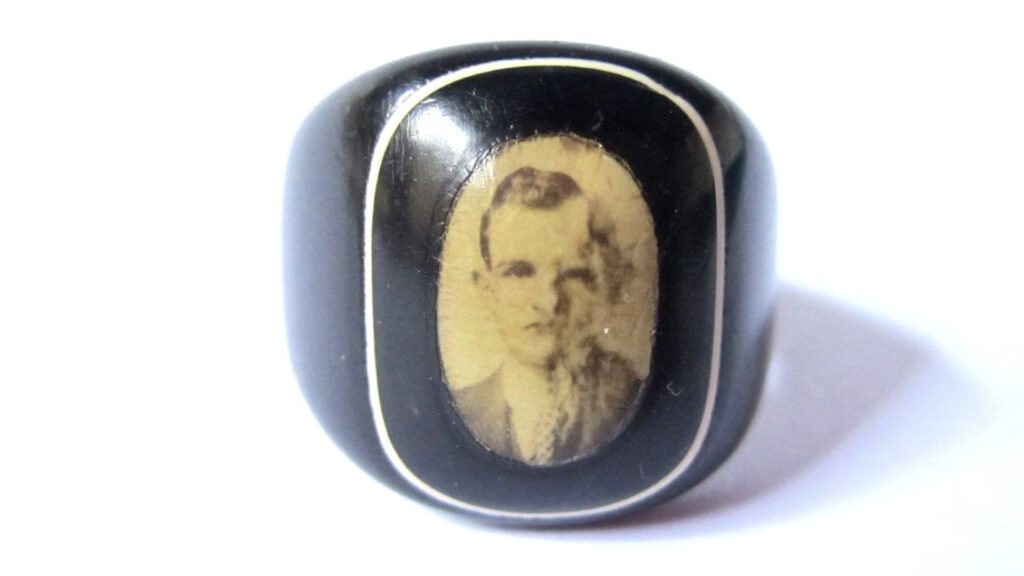*Gasp* Gothic Revival in Culture and Jewellery: Part 1, c.1740-c.1850
The Gothic Revival period of the early 19th century is an extremely pronounced period of obvious consequences in art and architecture, but also heavily affecting in morality and cultural lifestyle. It is a period that overlapped other forms of mainstream style to eventually become the dominant visual presence, particularly in memorial jewellery and had left its mark for the greater part of the 19th century.
Firstly, we must look at this emerging style to conflict directly with the ideals of the Neoclassical period. Thought the Neo-Gothic movement had begun c.1740, it took around sixty years for it to reach mainstream thought, a time when Neoclassicism was at its height.
Much of this thought was a reaction to religious non-conformity in an effort to swing back to the ideals of the High Church and Anglo-Catholic self-belief. This was a time when heavy industry was on the rise and modern society (as we consider it today) was established, a time of radical change that challenged pre-existing ideals of society. Though there had been growing small scale social mobility from the late 17th century, the late 18th and early 19th centuries saw the middle classes having the opportunity to promote through society with the accumulation of wealth. Augustus Welby Northmore Pugin, a designer, architect and convert to Catholicism, saw this industrial revolution as a corruption of the ideal medieval society. Through this, he used Gothic architecture as a way to combat classicism and the industrialisation of society, with Gothic architecture reflecting proper Christian values. Ideologically, Neoclassicism was adopted by liberalism; this reflecting the self, the pursuit of knowledge and the freedom of the monotheistic ecclesiastical system that had controlled Western society throughout the medieval period. Consider that Neoclassicism influenced thought during the same period as the American and French revolutions and it isn’t hard to see the parallels. The Gothic Revival would, in effect, push society into the paradigm of monarchy and conservatism, which would dominate heavily throughout the 19th century and establish many of the values that are still imbued within society today.
As we jewellery historians know, the best way to enact social change is through art and the stylistic affectations that surround us and influence our daily lives visually.
Much of the latter 19th century pieces had their origin in this Gothic Revival period, the bold styles with black enamel as well as being larger accommodated the evolution of female fashion, which heavier crinolines and cuffs, seemed to be a perfect fit. Styles didn’t automatically become larger due to the Gothic Revival influence, much of the older styles adapted Rococo acanthus designs and incorporated Gothic fonts into the lettering of the dedication in the pieces, which emerged around the c.1800-1810. By the 1820s this style was influencing brooches, rings, pendants and lockets more and more, until the 1830s when it reached its height, particularly in terms of diversity. Through the 1840s it had become the standard and into the 1850s, there was the Hallmarking Act of 1854 that allowed the use of lower grade alloys. Reflecting this upon the larger styles of female dress, pieces could be larger and lighter to wear, yet still give all the bold, gold and black enamel prominence of the pieces themselves.
Next, we’ll take a look at the Victorian society and how the Gothic Revival accommodated the culture and jewellery of the time.










